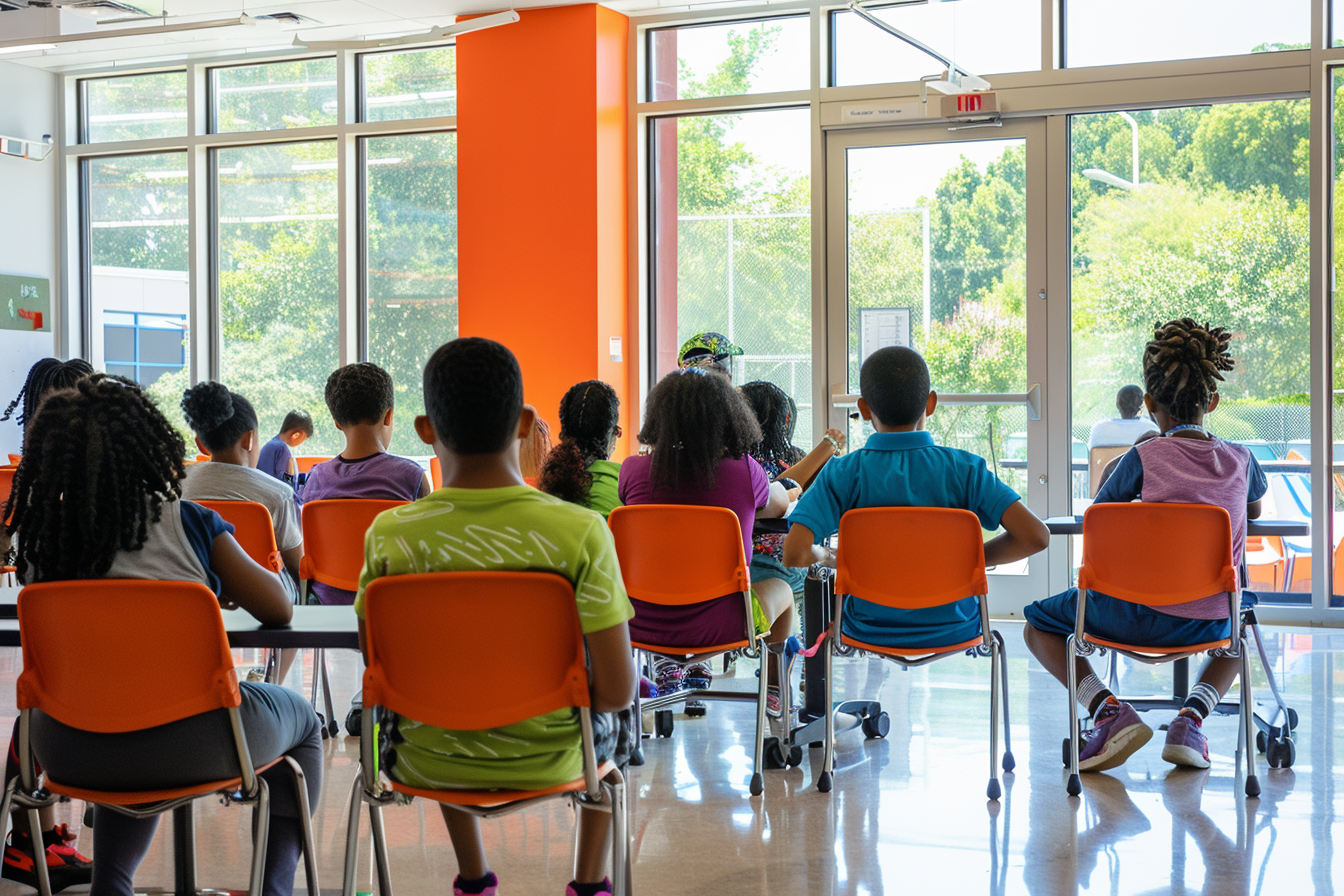Enhancing Student Engagement with Universal Design for Learning
Unlock student engagement with UDL strategies—flexible, inclusive teaching that boosts success for every learner.

Imagine a classroom where every student feels valued, engaged, and able to learn in ways that best suit their unique needs. This vision is becoming a reality in many schools through the implementation of Universal Design for Learning (UDL). As educators strive to meet the diverse needs of their students, UDL offers a flexible framework that can transform teaching and learning.
Universal Design for Learning goes beyond traditional teaching methods by providing multiple means of engagement, representation, and action & expression. This approach recognizes that variability among learners is the norm, not the exception. By embracing UDL, teachers can create inclusive classrooms that remove barriers to learning and offer all students equal opportunities to succeed.
We will explore the principles of UDL, practical strategies for implementation, and the numerous benefits it brings to the classroom. Join us as we delve into how UDL can revolutionize education and support every student's learning journey.
Understanding UDL
Universal Design for Learning (UDL) is an educational framework designed to accommodate the diverse needs of all learners by providing multiple means of engagement, representation, and action & expression. UDL aims to create flexible learning environments that can adapt to individual differences and promote inclusive education. This approach is rooted in the belief that variability among learners is the norm, not the exception.
Historically, UDL emerged from the field of architecture, where universal design principles were used to create spaces accessible to everyone. In the context of education, UDL principles were adapted to remove barriers to learning and provide all students with equal opportunities to succeed. The framework has gained traction in recent years as schools strive to create more inclusive classrooms that support diverse learners.
Enjoy science fiction? Check out my space books HERE on Amazon!
Understanding the core principles of UDL—providing multiple means of engagement, representation, and action & expression—is essential for educators looking to implement this approach. By designing flexible learning environments and instructional methods, teachers can create inclusive classrooms that cater to the needs of all students.
Types of Inclusive Strategies with UDL
Implementing UDL involves a variety of strategies to ensure all students can access and engage with the curriculum:
- Flexible Learning Environments: Designing classrooms that accommodate diverse learning needs by providing various seating options, adjustable lighting, and quiet spaces for focused work. This flexibility allows students to choose the environment that best supports their learning.
- Varied Instructional Methods: Using multiple teaching strategies, such as visual aids, hands-on activities, and multimedia presentations, to reach all learners. This variety ensures that students can engage with the material in ways that suit their learning preferences.
- Accessible Materials and Resources: Providing materials in various formats, such as text, audio, and video, to ensure accessibility for all students. This approach supports students with different learning styles and needs, including those with disabilities.
- Student-Centered Learning: Encouraging student choice and voice in their learning process by allowing them to select topics, projects, or methods of demonstrating their understanding. This approach fosters engagement and ownership of learning.
- Collaborative Learning Opportunities: Promoting group work and peer collaboration to build social skills and enhance learning. Collaborative activities can help students learn from one another and develop a sense of community.
These strategies collectively create an inclusive learning environment that supports the diverse needs of all students.
Benefits of UDL in Inclusive Classrooms
Implementing UDL in inclusive classrooms offers numerous benefits for students and educators:
- Enhanced Student Engagement: Providing multiple ways for students to engage with the material increases participation and interest in learning.
- Improved Academic Performance: Supporting diverse learning needs leads to better academic outcomes. When students have access to the resources and strategies that work best for them, they are more likely to succeed academically.
- Greater Equity and Access: UDL ensures that all students have the opportunity to succeed, regardless of their background or abilities. By removing barriers to learning, UDL promotes equity and access for all students.
- Fostering Independence: UDL empowers students to take charge of their learning by providing them with choices and fostering self-advocacy skills. This independence helps students become more confident and capable learners.
- Positive Classroom Environment: Creating a supportive and inclusive classroom culture helps build a sense of community and belonging among students. When students feel valued and understood, they are more likely to thrive socially and emotionally.
These benefits highlight the importance of implementing UDL to create inclusive and effective learning environments.
Implementing UDL in Schools
Implementing UDL in schools requires careful planning and collaboration among educators, administrators, and the community. The process begins with a thorough assessment and planning phase to identify the specific needs of the school community. Conducting surveys, focus groups, and assessments helps gather data on student needs, teacher readiness, and available resources, providing a clear picture of what is needed for successful implementation.
Professional development is a crucial component of implementing UDL. Training teachers on UDL principles and strategies ensures they have the knowledge and skills to create inclusive classrooms. Offering workshops, webinars, and ongoing professional development opportunities helps teachers stay informed and equipped to apply UDL effectively.
Collaboration among teachers, administrators, and the community is essential for planning and implementing UDL strategies. Engaging all stakeholders ensures that the initiatives are relevant, supported, and effectively address the needs of everyone involved. This collaborative approach fosters a sense of ownership and commitment to the success of UDL programs.
Resource allocation is another critical aspect of implementing UDL. Providing the necessary resources and support, such as access to technology, instructional materials, and classroom modifications, ensures that teachers have the tools they need to create inclusive learning environments. Regular monitoring and evaluation of UDL strategies help assess their effectiveness and make adjustments as needed. Using feedback from students, teachers, and parents to refine and improve programs ensures they continue to meet the evolving needs of the school community.
Overcoming Challenges in UDL Implementation
Implementing UDL can present several challenges, but these can be effectively managed with thoughtful strategies. Resource limitations are a common obstacle, but schools can address this by leveraging community partnerships, applying for grants, and utilizing volunteers to support UDL initiatives. Prioritizing cost-effective solutions, such as peer support programs and digital resources, can also help manage limited funding.
Resistance to change is another challenge, as some educators and stakeholders may be hesitant to adopt new practices. Addressing this reluctance requires clear communication about the benefits of UDL and providing evidence of its positive impact on student learning and engagement. Involving teachers in the planning and implementation process can help build trust and foster buy-in.
Maintaining consistency in UDL practices is crucial for long-term success. Schools should establish systems for ongoing support and professional development to ensure that teachers have the resources and knowledge needed to sustain UDL implementation. Regular monitoring and feedback help keep programs on track and make necessary adjustments.
Case Studies
Implementing UDL has led to notable successes in various educational settings across the country. Here are three case studies highlighting the impact of these initiatives:
Case Study 1: UDL Implementation in a Massachusetts Elementary School
In an elementary school in Massachusetts, UDL principles were incorporated into the curriculum to support diverse learners. Teachers received professional development on UDL strategies, and the school provided flexible learning environments and accessible materials. As a result, student engagement and academic performance improved, with notable gains in reading and math scores.
Case Study 2: Inclusive Classroom Strategies in a Colorado Middle School
A middle school in Colorado adopted UDL to create more inclusive classrooms. The school focused on providing varied instructional methods and promoting collaborative learning opportunities. Teachers reported increased student participation and a more positive classroom environment. Students with disabilities showed significant improvements in their academic and social skills.
Case Study 3: High School UDL Success in Washington State
In a high school in Washington State, UDL was implemented to address the needs of a diverse student body. The school provided professional development for teachers and allocated resources to support UDL practices. Student-centered learning and accessible materials became central to the school's approach. The initiative led to higher graduation rates and increased student satisfaction.
Practical Tips for Educators
Implementing UDL can be straightforward with the right approach and mindset. Here are some practical tips to help educators effectively incorporate UDL strategies into their classrooms:
- Start Small: Begin with a few UDL strategies and gradually expand. This allows you to become comfortable with the approach without feeling overwhelmed.
- Use Technology: Leverage digital tools to support diverse learners. Technology can provide flexible learning options and access to various resources.
- Encourage Student Feedback: Involve students in the process and adjust based on their input. This helps tailor the learning experience to meet their needs.
- Collaborate with Colleagues: Share ideas and resources with other teachers. Collaboration fosters a supportive environment and promotes the exchange of effective practices.
- Reflect and Adjust: Regularly review and refine UDL practices. Continuous reflection ensures that the strategies remain effective and responsive to student needs.
These tips can help educators create inclusive classrooms that support all students. By incorporating UDL principles, teachers can enhance student engagement, improve academic performance, and foster a positive and inclusive learning environment.
Future Trends in UDL
The future of UDL is evolving, with new trends enhancing its effectiveness and reach. Personalized learning paths are becoming increasingly popular, using technology to tailor instruction to individual student needs. These paths allow students to progress at their own pace and engage with materials that match their learning styles and interests.
Artificial intelligence (AI) is also playing a role in supporting diverse learners. AI-powered tools can provide real-time feedback, adapt lessons to student performance, and offer personalized learning experiences. This technology helps create more dynamic and responsive learning environments.
Check out our engaging printable posters. CLICK HERE to explore!
Global collaboration is another emerging trend, connecting classrooms worldwide to enhance learning experiences. By fostering cross-cultural exchanges and collaborative projects, students can develop a broader perspective and deeper understanding of global issues.
Ongoing research and development in UDL continue to drive innovation, ensuring that educators have access to the latest strategies and tools to support diverse learners. By staying updated on these trends, schools can continue to improve and expand their UDL practices.
Conclusion
Embracing Universal Design for Learning (UDL) is crucial for creating inclusive classrooms that support the diverse needs of all students. By implementing flexible learning environments, varied instructional methods, accessible materials, and fostering student-centered and collaborative learning, educators can enhance student engagement, improve academic performance, and promote equity. Despite challenges such as resource limitations and resistance to change, schools can overcome these obstacles through strategic planning, professional development, and community collaboration.
Looking ahead, the future of UDL is promising, with emerging trends like personalized learning paths, AI integration, and global collaboration offering new opportunities to enhance education. By staying informed and adaptable, educators can continue to refine their practices and create dynamic, supportive learning environments. Committing to UDL not only benefits students but also fosters a positive and inclusive school culture, ensuring all learners have the opportunity to succeed.
Check out some of my latest science fiction books HERE on Amazon!
Transform your classroom into an inspiring and vibrant learning space with our beautifully designed printable posters! Perfect for engaging your students and enhancing your teaching environment, our poster bundles cover everything from historical philosophers to animals. CLICK HERE to explore our exclusive collections on Teachers Pay Teachers and give your students the motivational boost they need!
